Quick Links
One of the best ways to play Magic: The Gathering is drafting. It’s a format that rewards knowledge of the game without linking the power of your deck to your wallet, but it’s also a great way for newer players to experience a new set.
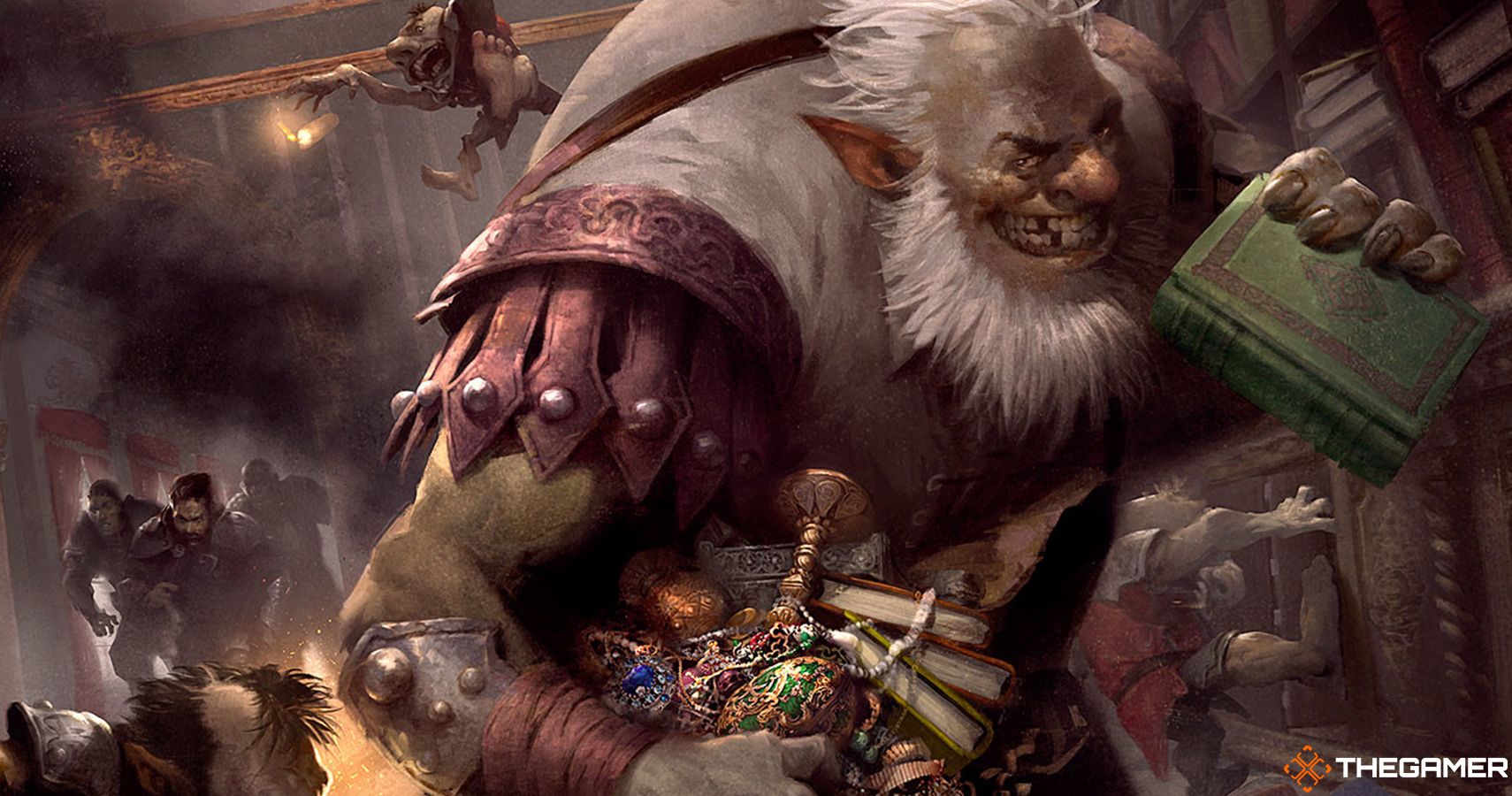
Related
While many sets focus on new mechanics or interactions, Foundations takes a back-to-basics approach, boiling each color down to the simplest form. This allows new players to get to know each color, while veteran players can relive the old-school feel of a clearly delineated color wheel. We’ll help you choose your pack one pick one with this guide!
Flying (White/Blue)
Flying is a keyword most frequently associated with blue, but white is close behind with dozens of Angels, Spirits, and Birds. Flying creatures cannot be blocked except by other creatures with flying or reach, so your airborne army can assault your opponent virtually unchecked.
One of the main things to look for when building a sealed or draft deck is evasion, the ability to get past your opponent’s blockers. This archetype leans heavily into that idea, allowing you to focus on other aspects of deckbuilding without worrying too much about having enough evasive creatures to break through the lines.
The signpost uncommon for this archetype, Empyrean Eagle, passively buffs all of your other flying creatures. While it cannot buff itself, it’s nonlegendary and only uncommon rarity, so you could draft a couple to buff each other.
Splashing a little green into this archetype works wonders: Green contributes +1/+1 counters and temporary buffs, allowing your flying creatures to hit even harder while also adding ramp options to get your bigger threats out early. Just be aware that Green itself lacks flying and will serve best in a support role.
Graveyard (Blue/Black)
Black is the color most associated with death, graveyards, and reanimation, but blue works hand-in-hand with it to fill both graveyards, empowering effects that check for any graveyard.
Dreadwing Scavenger demonstrates the synergy between blue and black by both filling your graveyard and growing stronger once you stack at least seven cards in it. The ability to draw cards every time it attacks is powerful, even if you have to discard a card right away.
There are several payoffs in the pair, so you can focus on one or spread your deck between several. Some cards are easier to cast when your graveyard is full, like Tolarian Terror, while others are stronger when you force your opponents to discard, mill, or otherwise fill their own graveyard.
Green is an excellent color to splash into this archetype: Green and black represent death and regrowth, synergizing to reward you for sacrificing your own creatures. It also provides ramp for your bigger spells in case your opponent shuts down your graveyard, allowing you to have a backup plan.
Raid (Black/Red)
Raid is a mechanic that encourages you to attack every turn and rewards you for playing in your second main phase. It’s an ability word that annotates that the creature with raid has an additional effect after you attack.
Perforating Artist has a trigger at the end of your turn, dealing three damage to each opponent unless they discard a card or sacrifice a nonland permanent. This ability only triggers if you attacked earlier in your turn, though, so you’ll need to attack frequently to get the most value.
Other creatures with raid have additional effects when they enter. Gorehorn Raider is a 4/4 for five mana but also Shocks a target for two damage after you attack. This is a good reminder for players that they don’t need to do everything during their first main phase. Sometimes there’s a benefit to holding cards for later.
This aggressive strategy encourages combat tricks to keep your attackers alive and to sneak in extra damage by buffing creatures that aren’t blocked. Green and white are both great at combat tricks, so splashing either in for access to instants like Giant Growth or Fleeting Flight is a big boost.
Don’t overlook Fake Your Own Death, which can kill an opponent’s blocker, trigger your own enter and leave effects, and net you a Treasure token, all for just two mana.
Power (Red/Green)
The red and green pairing is one of the simplest archetypes to understand: make a lot of mana, then hit your opponent hard. The archetype specifically looks for power of four or more, and there are lots of creatures that fit the criteria, buffs to get them there, and payoffs for hitting the target.
Ruby, Daring Tracker is an excellent signpost for this archetype: Not only does she produce mana of both colors, allowing you to get your bigger threats sooner, but she also gets stronger whenever she attacks while you control a creature with at least four power.
Green is the best color for mana acceleration, so keep an eye out for spells to fetch extra lands and creatures that tap for mana. Llanowar Elves won’t meet your four-power target, but it will generate mana every turn, so you can get your real threats out early.
This archetype can find itself invested heavily in large creatures that other colors can remove for a much lower cost, so it helps to be able to protect them. White offers a few ways to protect your creatures, along with some extra combat tricks a combat-focused deck will appreciate, while blue will allow you to counter spells that threaten your bombs.
+1/+1 Counters (Green/White)
White and green have always had a shared affinity for growth and community. Both colors are efficient at taking small creatures and growing them larger, and that’s exactly what this archetype does.
Counters are similar to the temporary buffs that make your creatures stronger for a turn, except that they stick around, allowing your creatures to keep growing into larger and larger threats. Good-Fortune Unicorn jumpstarts that growth by giving each of your creatures a +1/+1 counter as soon as they come into play.
Stacking +1/+1 counters is already good, especially if you can put them on something with trample. But also look for payoffs: Cards like Inspiring Paladin and Gnarlid Colony provide extra bonuses to all of your creatures with +1/+1 counters, encouraging you to spread your counters around instead of investing them all on one creature.
If you do plan on investing heavily into one creature, consider adding blue in order to counter your opponent’s removal. A better plan is to spread out the counters, which will allow your growing army of growing creatures to survive board-sized burn spells from red, which can also offer additional aggression and haste.
Life Gain (White/Black)
White and black have a complicated relationship, but one of the things they have in common is life gain. While life gain has traditionally been viewed as a weak mechanic, it’s improved over time with the addition of extra payoffs and is a force to be reckoned with in limited formats like sealed and draft.
White life gain comes primarily in the flavor of either healing or lifelink, both of which are present in Foundations. Lifelink is particularly powerful on creatures with higher toughness, like Felidar Savior, or on creatures with First Strike, so that they can block small threats and heal you at the same time. Black life gain is often in the flavor of vampirism, draining the vitality from your opponent or creatures on the battlefield.
Gaining life doesn’t win you the game by itself, so look for payoff effects. Fiendish Panda grows each time you gain life, so it’s useful to have lots of effects that give you more life multiple times per turn. Elenda, Saint of Dusk takes a different approach, getting more powerful when you keep your life total above where you started.
Green works well splashed into this archetype because of the short-term buffs and +1/+1 counters it offers, allowing your lifelink creatures to hit harder and heal you more.
Spells (Blue/Red)
Red and blue are both colors that like to throw around a lot of instants and sorceries, and the Foundations archetype reflects that by rewarding you for casting a lot of noncreature spells.
Lacking the storm mechanic that both colors always want, Foundations instead focuses on permanents that provide benefits from casting instants, sorceries, and other noncreature spells. Some, like Crackling Cyclops, grow stronger with each noncreature spell you cast, while others, like Balmor, Battlemage Captain, buff every creature you control.
Other permanents directly benefit the spells as you cast them, like Mocking Sprite, which reduces the cost of your instants and sorceries by one generic mana. Thousand-Year Storm is the crown jewel for this archetype in limited formats, allowing you to cast multiple cheap spells before dropping a bomb with several copies.
If you build with an eye to blue’s card draw, the biggest weakness of this archetype is the lack of mana. Needing to play multiple cards each turn means that you’re likely to run out of gas. Thankfully, green has several sorceries that can trigger your effects while also providing you with the extra lands that you need. This can be ignored if you’re able to pick up several mana rocks like Heraldic Banner and focus more on noncreature spells than on instants and sorceries.
Morbid (Black/Green)
Black and green together represent the circle of life: From death comes growth, and while it doesn’t matter what dies, you’ll get the growth. The morbid ability word signals that there’s a trigger on your end step if any creature died that turn.
Black can feed the death requirement for morbid cards, either by destroying your opponent’s creatures or by sacrificing your own. Keeping an eye on how many of your own creatures you’ll need to sacrifice means that you can include creatures with built-in recursion, like Reassembling Skeleton, which can keep on coming back every time you kill it.
Each turn that a creature dies, you’ll have triggers from all of your morbid creatures, like Warden of the Cycle’s options to draw a card or gain life. To maximize these effects, look for instants and permanents that allow you to send creatures to the graveyard on your opponent’s turn, and for ways to bring all of your dead creatures back.
If you’re struggling to find good recursion in black, consider splashing in white. White has a handful of options, as well as lots of ways to make a ton of small creature tokens that you can use as chump blockers or sacrifice to trigger your morbid effects.
Aggro (Red/White)
Red and white synergize to make a fast, aggressive archetype that can win before your opponent can finish setting up, and that’s important because it tends to run out of gas when it gets trapped in a longer game.
The goal of this archetype is to flood the board with small, cheap creatures that you can buff for big, early swings. Combat tricks abound, so keep an eye out for instants that will let you turn combat in your favor. After one or two of those, your opponent will think twice before committing to blocking even your smallest creatures.
Cards that produce multiple tokens, like Heroic Reinforcements and Prideful Parent, are key. Equally important are ways to chip away at your opponent’s health, such as Impact Tremors, which will ping them for one damage every time you get a creature into play. A couple of copies on the board and your token makers will really start to hurt.
Blue can help to refill your hand if you start to run low on cards, and black offers some extra recursion to turn a graveyard full of dead creatures into an army in one fell swoop.
Ramp (Green/Blue)
Green and blue work to build up an enormous mana base, allowing you to play big spells much faster and more consistently than other archetypes. Additionally, it provides multiple options to gain extra benefit from playing your lands, especially in the form of landfall triggers.
Landfall is an ability word that designates an effect that’s triggered by putting a land into play. At first, this might seem like a weak ability, since you can only drop one land per turn, but there are several ways to get more. Cards like Springbloom Druid and Burnished Hart can fetch a lot of extra lands, building up triggers and your mana base exceptionally fast.
Grappling Kraken is a great example of what the archetype can do: It’s big and expensive, but that isn’t an issue if you’ve been playing extra lands. Once it’s in play, you can keep getting landfall triggers, which tap your opponent’s creatures and give them stun counters, pointing out the control aspect of blue mana.
This archetype can struggle in the early game, so it’s worth considering some extra removal from black. White can offer cheap chump blockers, but Llanowar Elves can do the same thing without adding an extra color and while providing mana.
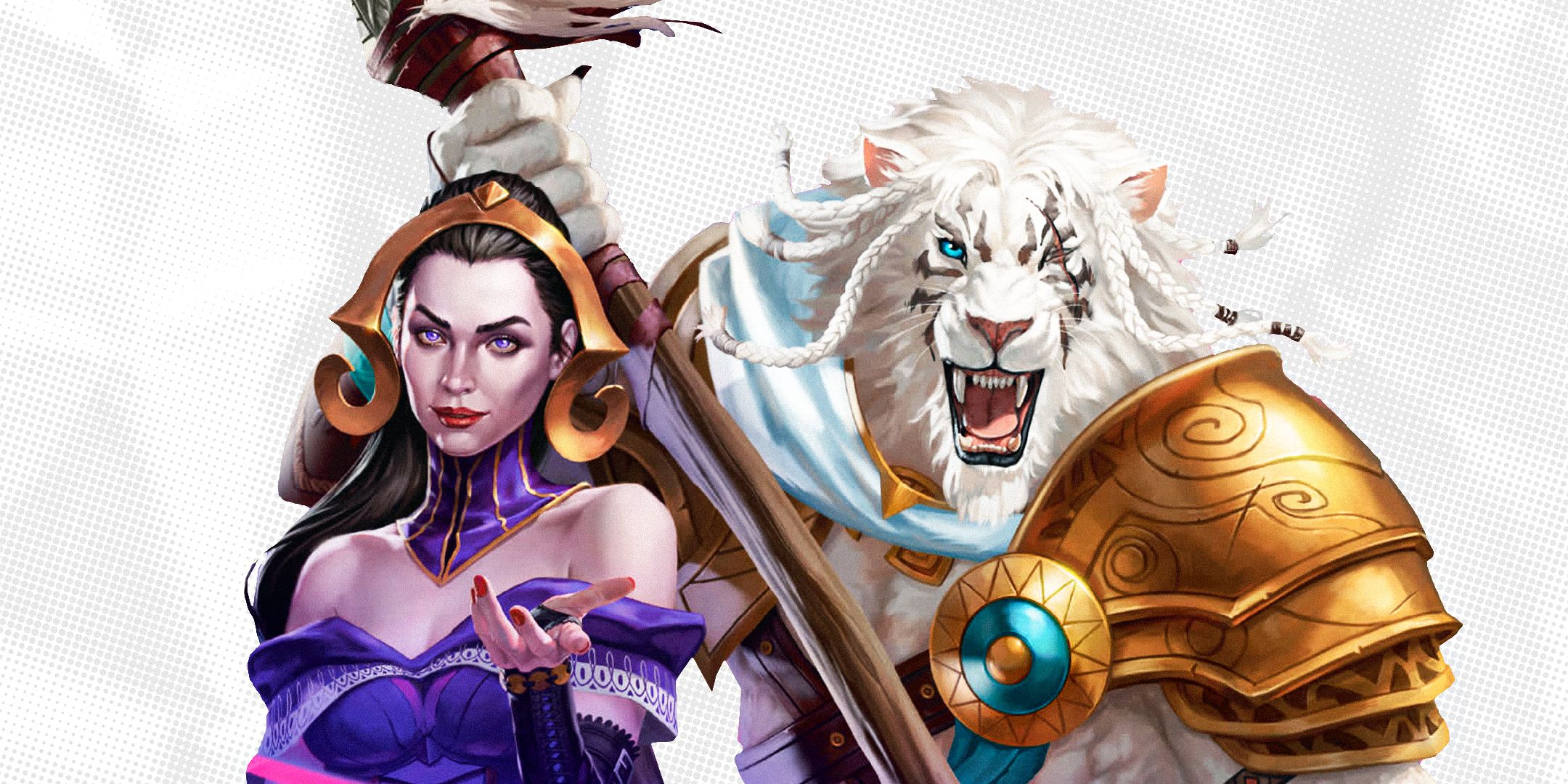
Next
TheGamer Goes Primal For Our Exclusive Magic: The Gathering: Foundations Beginner Box Reveal
Primal is a classic green deck with big, mean creatures in Magic: The Gathering’s Foundations Beginner box.
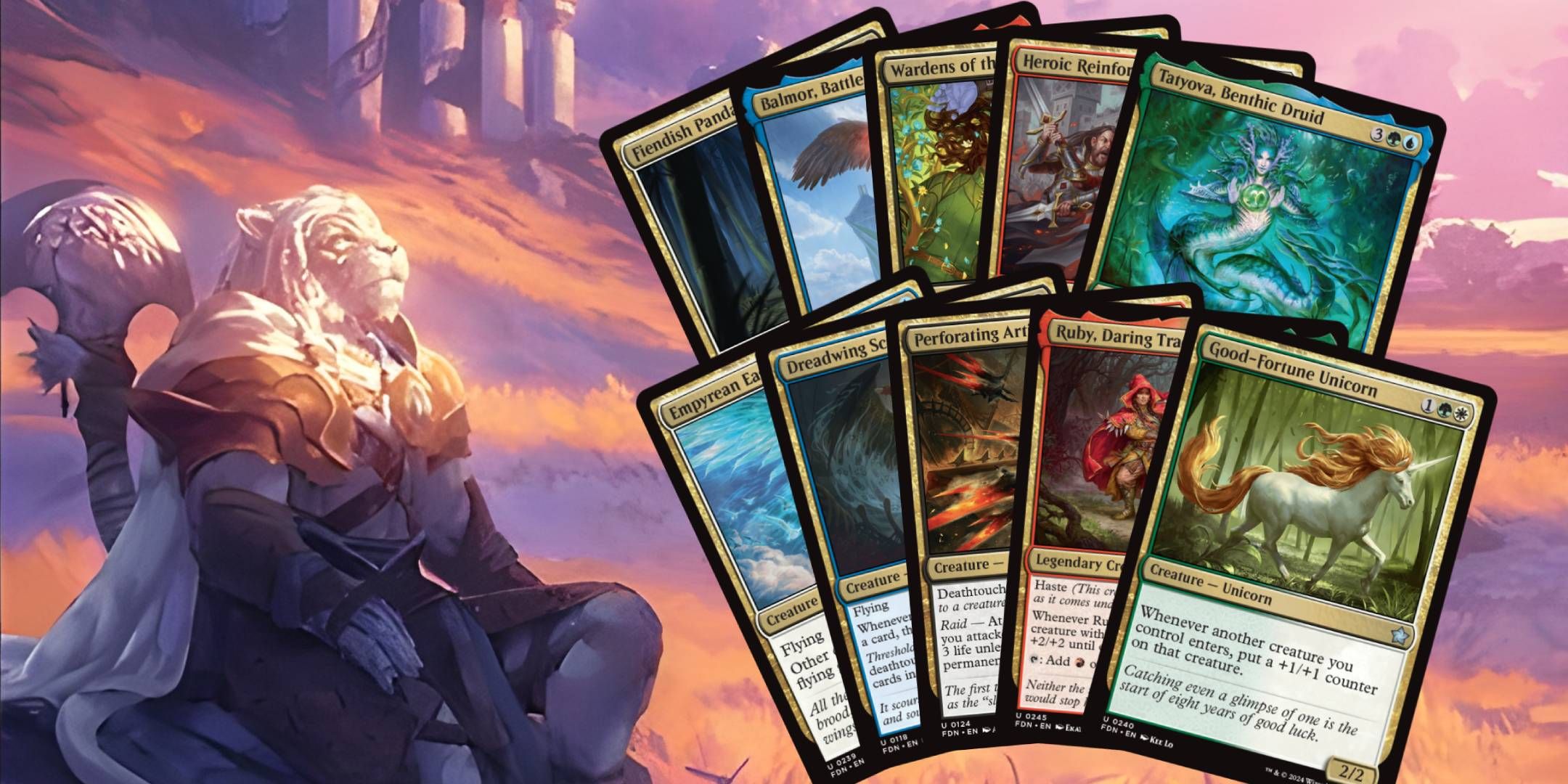
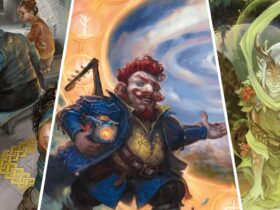

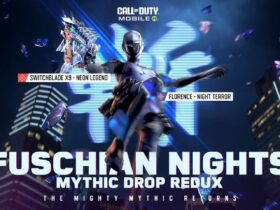


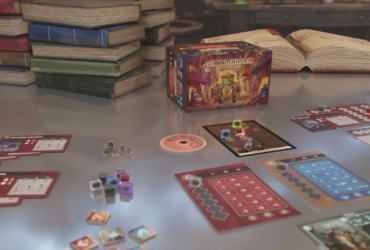
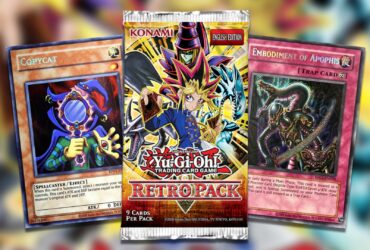

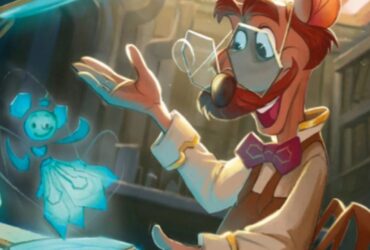
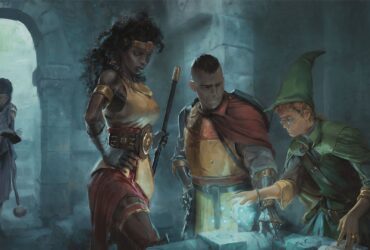
Leave a Reply